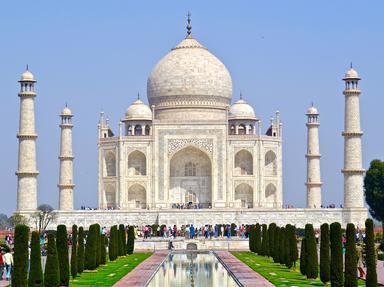
India's Colorful Cities Trivia Quiz
Many cities in India have been given colorful nicknames. See if you can match the city with its sobriquet. Don't think you know much about India's colorful cities? Follow the hints given of areas from around the world that have the same nickname!
A matching quiz
by ponycargirl.
Estimated time: 4 mins.
- Home
- »
- Quizzes
- »
- Geography Trivia
- »
- Asia
- »
- India